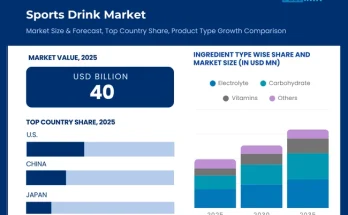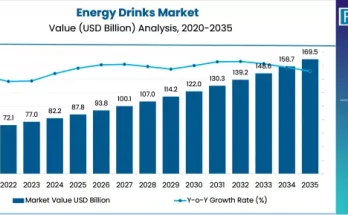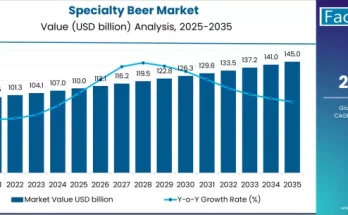The global plant-based fish market is projected to grow from USD 1.3 billion in 2025 to approximately USD 3.4 billion by 2035, recording a compound annual growth rate (CAGR) of about 10.2% over the forecast period. Demand is driven by growing consumer interest in sustainable, cruelty-free seafood alternatives, rising flexitarian and vegetarian diets, and advances in food technology that allow manufacturers to closely replicate fish taste and texture.
Market participants are increasingly blending plant proteins (such as soy, pea, and other legume sources) to recreate fish fillets, sticks, patties, and other formats. Technological innovation in extrusion, flavoring, and texturization is enabling more realistic sensory experience, helping these products find acceptance in both retail and foodservice channels.
Key Market Insights at a Glance
-
Market Value (2025): USD 1.3 billion
-
Forecast Value (2035): USD 3.4 billion
-
CAGR (2025-2035): ~10.2%
-
Dominant product formats: Fillets, sticks, or similar fish-style plant alternatives
-
Leading protein sources: Soy / pea protein blends
-
Key growth regions: North America, Europe, Asia Pacific
To Access the Complete Data Tables & in-depth Insights, Request a Discount on this report: https://www.factmr.com/connectus/sample?flag=S&rep_id=5728
Five Forces Driving Market Growth
-
Sustainability & marine resource concerns: Overfishing, depletion of fish stocks and environmental impacts encourage consumers to seek plant-based seafood substitutes.
-
Dietary & lifestyle shifts: More consumers adopt flexitarian, vegetarian or vegan diets; even pescatarians look for alternative fish options free from issues like contaminants (mercury, microplastics).
-
Technological innovations & product quality: Advances in extrusion, texturization, flavor systems and fortification (e.g. omega-3 from algae) help match taste, texture, and nutritional profiles.
-
Retail & foodservice adoption: Products are becoming more accessible through mainstream retail, supermarkets, and ready-to-cook / ready-to-serve formats in restaurants or prepared meals.
-
Competitive innovation & scale-up: Companies are scaling production, improving formulations to reduce cost, and increasing capacity to meet growing demand globally.
Regional Outlook
-
North America: Strong adoption driven by high consumer awareness of sustainability and nutrition, and presence of major food innovation companies.
-
Europe: Growing demand from environmentally conscious consumers and regulatory support for sustainable food alternatives; developed food processing infrastructure helps adoption.
-
Asia Pacific: Fastest growth potential due to rising incomes, increasing health awareness, large potential consumer base, and increasing acceptance of alternative protein products.
-
Latin America: Emerging opportunities as retailers and local manufacturers enter the alternative seafood segment, especially in urban markets.
-
Middle East & Africa: Growing niche demand among health / sustainability-oriented consumers, and potential in retail and specialty food segments.
Recent Developments
-
Manufacturers have launched new plant-based fish fillet and fish stick product variants leveraging soy / pea protein blends and texturization to mimic fish texture.
-
Partnerships have been formed between alternative protein companies and seafood processors or flavor houses to develop more realistic fish analogues, including fortification with algae-derived omega-3 fatty acids.
-
Some food technology firms have improved extrusion / cooking processes to produce sticks / patties with flaky texture and fish-like mouthfeel.
-
Retail brands have begun offering ready-to-cook plant-based fish patties or fillets in frozen or chilled formats, targeting both vegetarian / flexitarian consumers and foodservice channels.
Competitive Landscape
Key players in the plant-based fish market include startups and established alternative protein / seafood substitute manufacturers that focus on plant-powered fish analogues. These companies are investing in R&D, production scaling, product innovation (flavored fillets, fish sticks, patties), and expanding distribution through retail and foodservice globally.
Market Outlook & Strategic Insights
Over the forecast period, the plant-based fish market is expected to grow strongly as consumers continue to adopt sustainable dietary choices and as technology improves product quality and reduces costs.
Suppliers that focus on high quality / nutrition (including fortification), scaling production, and establishing strong cold-chain / frozen formats will be well positioned.
Regions such as Asia Pacific and Latin America appear particularly promising due to rising consumer incomes, increasing demand for alternative protein, and opportunities for local manufacturing and distribution.
Purchase Full Report for Detailed Insights
For access to full forecasts, regional breakouts, company share analysis, and emerging trend assessments, you can purchase the full report: https://www.factmr.com/checkout/5728
Have specific requirements or need assistance on report pricing or have a limited budget? Please contact sales@factmr.com
Contact:
US Sales Office
11140 Rockville Pike
Suite 400
Rockville, MD 20852
United States
Tel: +1 (628) 251-1583, +353-1-4434-232
Email: sales@factmr.com
About Fact.MR:
Fact.MR is a global market research and consulting firm, trusted by Fortune 500 companies and emerging businesses for reliable insights and strategic intelligence. With a presence across the U.S., UK, India, and Dubai, we deliver data-driven research and tailored consulting solutions across 30+ industries and 1,000+ markets. Backed by deep expertise and advanced analytics, Fact.MR helps organizations uncover opportunities, reduce risks, and make informed decisions for sustainable growth.



